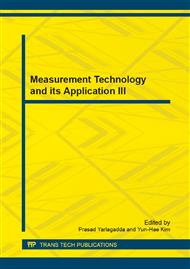p.883
p.887
p.899
p.904
p.911
p.917
p.922
p.927
p.933
Implementation of Encoder, Foot Sensor and Walk for Imitation Control of Biped Robot
Abstract:
Programming a biped robot to walk is a challenging issue in robotics. For a stable gait, prior knowledge of the robot’s physical parameters and sophisticated control algorithms are required. Robot walking by imitating a human gait becomes new challenging issues. Using a human motion data to the robot’s walk is convenient even though direct usage of the data usually results in dynamically unstable motion. The purpose of this paper is to develop a new type of encoder and foot sensor for biped imitation control system, which is direct and real-time sensor system. Characteristics of the sensor system are discussed. Finally, the operator’s joint motion can be imitated to the robot by using the new type of wearable encoder sensor. CoP through the developed foot sensor can be obtained and utilized to walk.
Info:
Periodical:
Pages:
911-916
Citation:
Online since:
June 2014
Authors:
Keywords:
Price:
Сopyright:
© 2014 Trans Tech Publications Ltd. All Rights Reserved
Share:
Citation:


